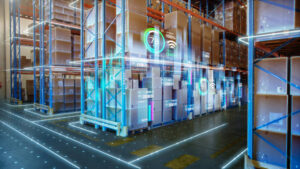Last-mile delivery refers to the final step in the shipping process where a product moves from a transportation hub or distribution center directly to the end customer’s doorstep. This stage is crucial because it bridges the gap between the supply chain and the customer, ultimately shaping the overall delivery experience.
While it might sound like a simple leg of the journey, last-mile delivery is often the most complex, costly, and time-consuming part of the shipping process. It involves coordinating routes, managing traffic and urban congestion, handling customer expectations, and ensuring timely, accurate delivery. The importance of this delivery phase has grown significantly in recent years due to changing consumer habits and technological advances.

Why Last-Mile Delivery Matters More Than Ever
1. The Rise of E-Commerce and Consumer Expectations
Online shopping has exploded globally, with customers expecting faster and more convenient delivery options. Same-day and next-day deliveries have become standard in many markets, making efficient last-mile delivery an essential competitive differentiator. Customers now demand real-time tracking, flexible delivery windows, and hassle-free returns, all of which depend heavily on the effectiveness of the last-mile process.
2. High Costs and Operational Challenges
Last-mile delivery can account for up to 53% of total shipping costs, making it a major expense for businesses. Urban traffic congestion, failed delivery attempts, and complex address issues add layers of difficulty and cost. Companies that can streamline this process without compromising service quality can significantly improve their profitability.
3. Impact on Customer Satisfaction and Brand Loyalty
The last impression customers receive is often shaped by the delivery experience. Late, damaged, or missed deliveries can lead to dissatisfaction and lost future sales. Conversely, fast, reliable, and transparent last-mile delivery builds trust and encourages repeat business. This makes last-mile logistics not just a shipping concern, but a key part of brand reputation.
4. Growing Environmental Concerns
As deliveries increase, so do concerns about carbon emissions and urban pollution. Last-mile delivery is at the heart of this issue since multiple small shipments, often with inefficient routes, contribute to traffic and pollution. Companies are investing in green delivery solutions—like electric vehicles, cargo bikes, and optimized routing—to reduce their environmental footprint while maintaining speed and efficiency.
5. Advances in Technology and Innovation
Technology is revolutionizing last-mile delivery with innovations such as real-time route optimization, delivery drones, autonomous vehicles, and smart lockers. These advancements help companies overcome traditional last-mile challenges by increasing speed, reducing costs, and enhancing customer convenience.
Conclusion
Last-mile delivery is the critical final link between a business and its customers. As e-commerce grows and customer expectations evolve, efficient last-mile logistics have never been more important. Businesses that invest in optimizing this phase—through technology, sustainable practices, and customer-focused solutions—will gain a strong competitive advantage by delivering exceptional service quickly and cost-effectively.
